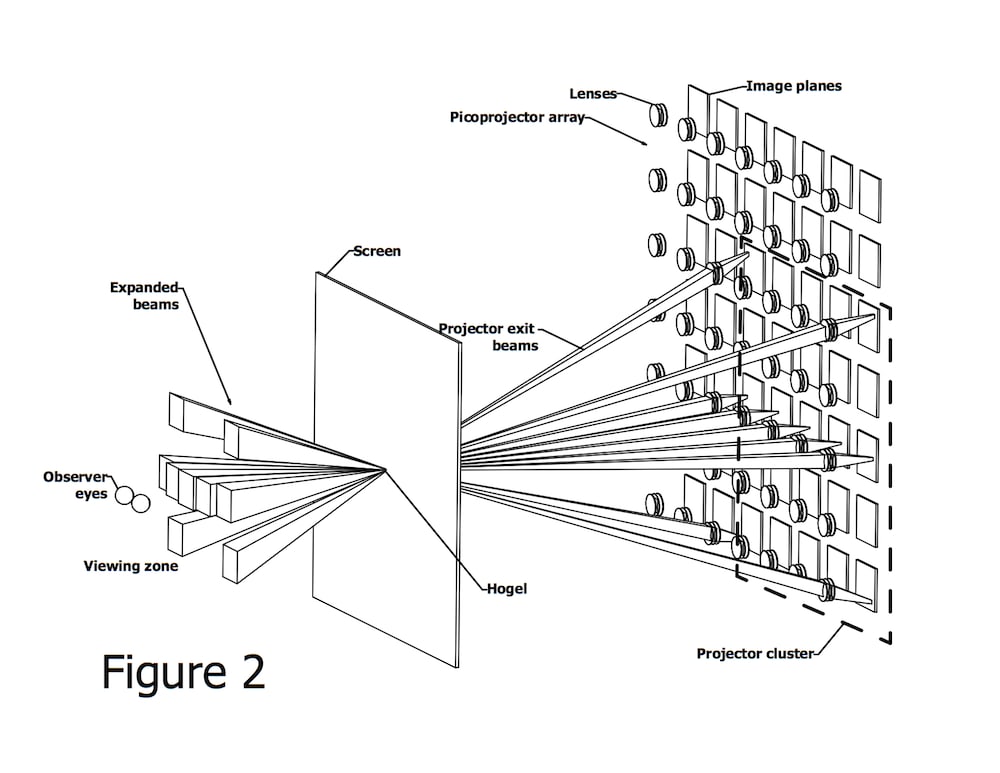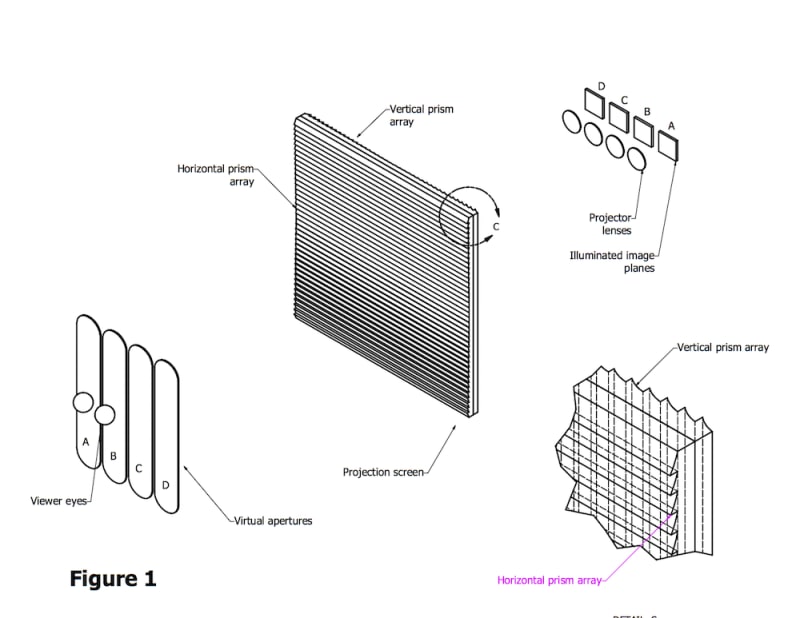The ability to construct multiple-perspective images of natural or synthesized scenes is growing rapidly driven by advances in computational power and image capture technology. In principle these images provide the input data for virtual reality hologram-like displays that produce light fields that approximate the light from a real object, with natural perspective change with observer viewpoint and stereoscopic perception without viewing aids such as special glasses. In practice display technology has lagged image production technology. Head mounted virtual reality displays allow individuals access to this rich visual world, while larger hologram-like displays based on flat panel technology have limitations in brightness, resolution and field of view. The proposed large display technology is based on projection technology and allows higher brightness, resolution, and field of view. In particular it would allow high quality communal virtual reality experiences without the social isolation of headgear or the need to wear a device.
Two display architectures are included. In the first a horizontal array of projectors focus on a screen formed from superimposed horizontal and vertical prism arrays as shown in Figure 1. The screen directs the light such that the image from each projector is visible only through a single well-defined virtual aperture near the viewer. The virtual aperture width is less than the viewer’s interocular spacing so each eye sees a different perspective view and the viewer perceives a stereoscopic impression. In this architecture only horizontal perspective changes with viewing position. Resolution and brightness are high since each projector illuminates the full screen with a single perspective view at full projector resolution and the light is concentrated in the virtual aperture.
Figure 2 shows the second architecture in which an X-Y array of picoprojectors illuminates the rear of a screen. Each point on the screen is illuminated by a cluster of projectors so that it forms a “hogel” or holographic pixel that varies in brightness and color as the horizontal and vertical viewing angles change. Hogels may be used to form a “holographic” table with horizontal and vertical perspective change that observers can walk around. Each picoprojector only illuminates a portion of the screen, so brightness and resolution may be very high while the overall physical depth of the display is modest.
Displays using horizontal and X-Y projector arrays are known, but typically use Gaussian diffusion screens to expand the projector exit beams to provide a continuous image. This results in uneven illumination and double imaging in transition regions. The proposed screens are novel in that they use arrays of small optical elements rather than diffusers as beam expanders, resulting in more even illumination and minimal double imaging. The architecture of Figure 1 is described in more detail in published PCT application WO2014070641, and a US patent with broad claims will issue shortly. Published PCT application WO2016057308 covers the architecture of Figure 2. It has received a favorable international search report, and was recently filed in the US as a national phase application.
Like this entry?
-
About the Entrant
- Name:Kirby Meacham
- Type of entry:individual
- Software used for this entry:AutoDesk Inventor
- Patent status:pending





